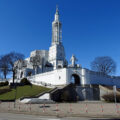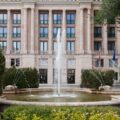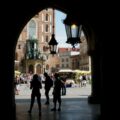Poland – an example of delayed secularisation?
Poland – an example of delayed secularisation?
Is Poland an example of delayed secularisation? Recent data seems to suggest so. The future trajectory depends on the reaction of the Catholic Church.
Polish Catholic Church in crisis
The Catholic Church in Poland is undergoing a significant crisis. At face value, it still retains a strong position in the country. There are approximately 91.9% of nominal Catholics,[1] and 88% of pupils in educational institutions still participate in confessional religion classes.[2] However, other numbers show that a significant change in attitudes is approaching. Recent data from Pew Research Center shows that Poland has the highest difference in the world in shares of younger and older adults who consider religion important.[3] Also, the number of candidates to priesthood fell nearly 20% between 2020 and 2021 after several years of sharp decline.[4] Are these signs of a delayed secularisation?
Reputation continues to crumble
Changes in attitudes could be attributed primarily to the intensification of concerns around the Church’s responses to the sexual abuse crisis, as well as the too-close political associations of at least some Church leaders. Both of these problems were highlighted in the fictional movie ‘Clergy’. This movie portrayed the hypocrisy in moral and ethical stances of different representatives of Catholic clergy in Poland. The impression made by the movie was later confirmed in highly publicised documentary movies like ‘Tell No One’ or ‘Hide and Seek’. The fictional movie was watched by a record audience with one of the highest viewing records in the post-1989 Polish movie industry.[5] However, its numbers paled in contrast with the two above-mentioned documentary movies, which, at the time of writing, had over 24.5 million and 8 million views respectively.[6]
The so-called McCarrick Report also undermined the mythical status of John Paul II.[7] A subsequent documentary called ‘Don Stanislao’ portrayed his former secretary and now cardinal in a poor light.[8] The Terlikowski Commission, a lay-led commission that looked into the actions of Dominican Father Paweł M, showed in their 2021 report that similar patterns of negligence among bishops and parish priests could have been observed in the country’s Dominican province.[9]
Low approvals and religious practice despite high rates of faithful
All of these events led to a significant drop in approval for the activity of the Catholic Church in Poland. According to the Centre for Public Opinion Research, public approval for the activity of the Church is at its lowest since 1989 when it was 85% – now it is only 46%. Between March and December 2020 the approvals fell by 16%, with a slight increase of 5% at the beginning of 2021.[10] Another study of the same organisation showed that while the level of religious faith only slightly diminished between 1992 and 2021 (from 94% to 87.4%), religious practice has seen a significant drop in the same period – from 69.5% to 42.9% in the general population. Among people aged 18-24 this change was even more significant – the drop has been from 69% to 23%.[11]
Increasing hostility and attacks on church buildings
The increase in the loss of approval coincides with the increase in hostility towards the Church. In the light of the October 2021 Constitutional Tribunal ruling which further curtailed possibilities for abortion, Poland experienced the most significant protests in its post-communist history. In an unprecedented turn, some of the protesters targeted Catholic churches and disrupted liturgies, accusing the Church of alliance with the government in violating their rights.[12]
Is Poland experiencing delayed secularisation?
All of these changes put forward the question: will Poland follow Western Europe along the trajectory of secularisation, and experience delayed secularisation? The significant change in the younger part of Polish society could suggest so. However, as the country remains one of the most religious in Europe, there still might be a twist in the plot. Even in credibility terms, there might occur, for example, changes in approval for the Catholic Church, as exemplified by the early 2021 correction. Two significant questions remain. Will the Catholic Church in Poland be able to better respond to the corruption in its midst? And will it set itself free from too-close governmental alliances? These seem to be the biggest factors impacting social perception. The next few years will probably be decisive.
You can use the free EARS Dashboard to learn more about trends and developments on the topic of religion and society. Hundreds of article summaries from all over the world were added in the past month!
Sources
[2] Annuarium Statisticum Ecclesiae in Polonia AD 2020
[3] Young adults around the world are less religious
[5] ‘Kler’ – jaką miał oglądalność?
[7] Vatican report faults successive popes over defrocked cardinal Theodore McCarrick
[8] Don Stanislao. Druga twarz kardynała Dziwisza – program online, Oglądaj na Player.pl
[9] Brak reakcji dominikanów nie daje się usprawiedliwić. Raport komisji do zbadania sprawy Pawła M. [streszczenie]
[11] CBOS: w latach 1992–2021 praktyki religijne w grupie 18–24 lata spadły z 69 proc. do 23 proc.
[12] Protests shake Poland as government looks for a retreat on abortion ruling






